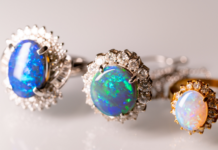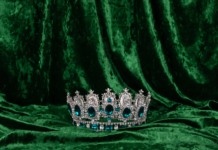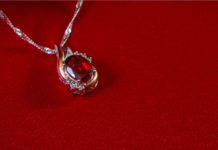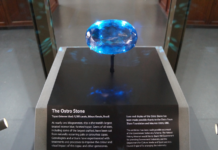Are you fascinated with gemstones? Do you love the color blue? If so, then sapphire is definitely a gemstone that you should learn more about.
This precious gemstone has been admired for centuries due to its striking beauty, durability, and symbolism. In this blog post, we will delve into the world of sapphire – exploring its history, properties, uses, famous gemstones, mining locations, and more.
What is Sapphire?
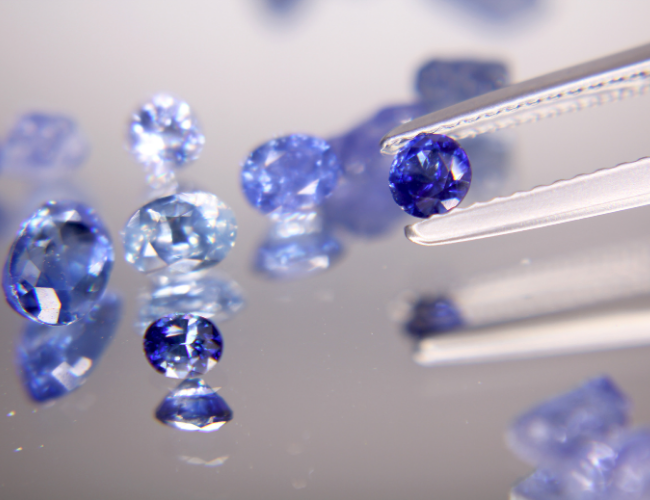
Sapphire is a variety of the mineral corundum (aluminum oxide) and comes in many colors. Its most popular color is blue, but it can also be found in pink, yellow, green, purple, orange, and even colorless. The blue color is caused by trace amounts of iron and titanium within the corundum crystal structure.
Sapphires are one of the hardest minerals on earth (second only to diamonds) and have a rating of 9 on the Mohs scale. They are commonly used in jewelry due to their durability and high resistance to scratches and abrasions.
The History
Sapphire has a long and rich history dating back to ancient times. The name “sapphire” comes from the Latin word “sapphirus,” which means blue. It was first discovered in India over 2,000 years ago and was highly valued by royalty and religious leaders. In fact, sapphires were often used in ancient times as a symbol of power and wealth.
One of the most famous sapphires in history is the Star of India, which was discovered in Sri Lanka in the late 1800s. This grayish-blue sapphire weighs an astonishing 563 carats and is currently on display at the American Museum of Natural History in New York City.
Properties
Sapphires have a number of unique physical and chemical properties that make them stand out from other gemstones. Here are some of the most important properties of sapphire:
- Hardness: As previously mentioned, sapphires are one of the hardest minerals on earth with a rating of 9 on the Mohs scale.
- Color: While blue is the most popular color, sapphires can come in a range of colors.
- Clarity: Sapphires often have inclusions (internal flaws) due to their formation process, but high-quality sapphires have fewer inclusions.
- Transparency: Sapphires are usually transparent to translucent, allowing light to pass through the gemstone.
- Lustre: Sapphires have a vitreous (glassy) lustre when cut and polished.
- Refractive index: Sapphires have a refractive index of 1.76-1.78, which means that they bend light at a particular angle.
Uses
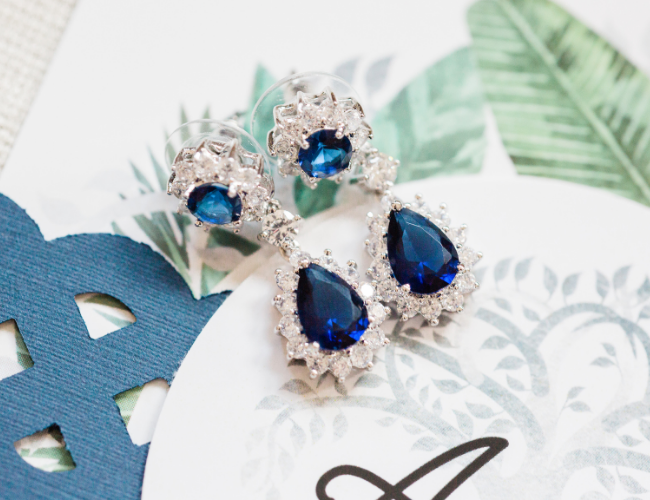
Sapphires have been used for a variety of purposes throughout history, including jewelry, technology, and industrial applications. Here are some of the most common uses of sapphire:
- Jewelry: Due to their beauty and durability, sapphires are commonly used in engagement rings, earrings, necklaces, bracelets, and more.
- Watch faces: Sapphires are often used as the crystal cover for watch faces due to their scratch-resistant properties.
- Technology: Sapphire is used in electronic devices such as smartphones, tablets, and LEDs due to its heat-resistant and scratch-resistant properties.
- Industrial applications: Sapphire is used in a variety of industrial applications, including cutting and polishing tools, scientific equipment, and even spacecraft windows.
How to Identify Real?
If you’re planning on purchasing a sapphire or already own one, it’s important to know how to identify a real sapphire. Here are some tips:
- Color: A real sapphire should have a consistent color throughout the gemstone.
- Clarity: While sapphires often have inclusions, high-quality sapphires should have fewer inclusions and be relatively clear.
- Luster: A real sapphire should have a glassy, polished luster.
- Hardness: Sapphires should be very hard and resistant to scratches.
- Weight: Sapphires can be heavy due to their density, so a real sapphire should feel heavier than a fake one.
Caring for Sapphire Jewelry
If you own a piece of sapphire jewelry, it’s important to take care of it properly to ensure that it lasts for years to come. Here are some tips for caring for sapphire jewelry:
- Cleaning: Use a soft cloth or brush to clean with warm water and mild soap. Avoid using harsh chemicals or ultrasonic cleaners.
- Storage: Store separately from other jewelry to prevent scratches and damage.
- Wear: Avoid wearing while doing activities that may cause damage,such as sports or heavy lifting.
- Maintenance: Take to a professional jeweler for regular maintenance, such as prong tightening or cleaning.
Famous Sapphire Gemstones
Sapphires have been admired and coveted throughout history, and there are many famous sapphire gemstones that have captured the world’s attention. Here are some of the most famous sapphire gemstones:
The Star of India
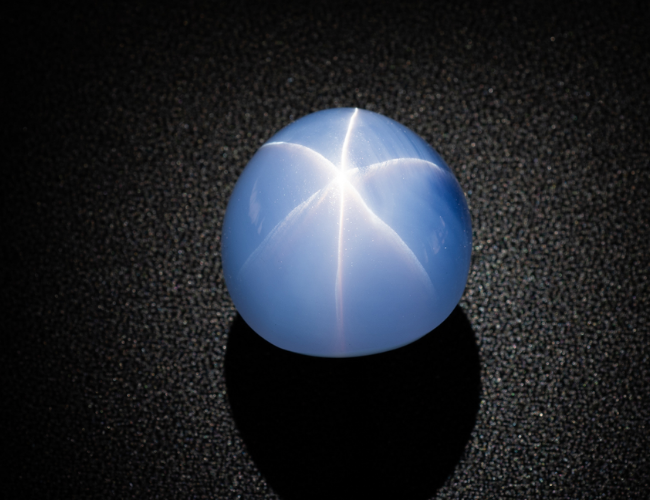
As previously mentioned, the Star of India is one of the most famous sapphire gemstones in the world. This grayish-blue sapphire weighs an incredible 563 carats and is known for its distinctive star pattern caused by inclusions within the crystal structure.
Princess Diana’s Engagement Ring

Perhaps one of the most famous sapphire gemstones of all time is Princess Diana’s engagement ring. The ring features a 12-carat oval blue sapphire surrounded by 14 diamonds and was given to Diana by Prince Charles when they got engaged in 1981.
After Diana’s death in 1997, the ring was passed down to her son, Prince William, who later gave it to his now-wife, Kate Middleton.
The Logan Sapphire
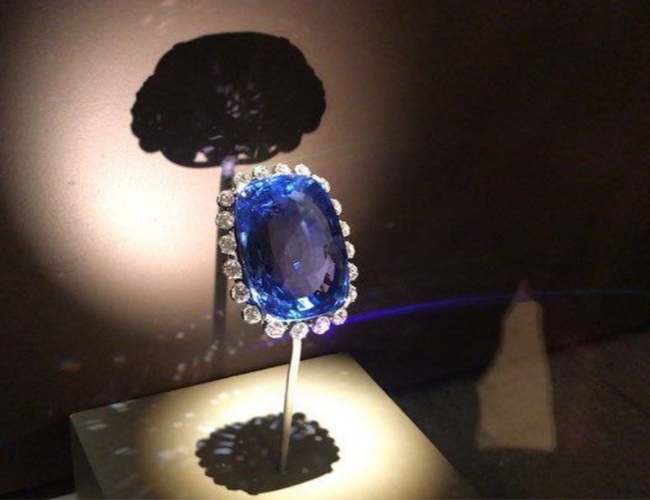
The Logan Sapphire is another famous sapphire gemstone, weighing an impressive 423 carats. The gemstone was discovered in Sri Lanka in the early 1900s and was eventually donated to the Smithsonian Institution in Washington D.C.
Sapphire Mining Locations
Sapphires can be found in a variety of locations around the world, including:
- Sri Lanka: Known for producing high-quality blue sapphires with excellent clarity.
- Madagascar: Known for producing pink, yellow, and green sapphires.
- Australia: Known for producing blue and green sapphires.
- Myanmar (Burma): Known for producing rare and valuable “pigeon’s blood” red sapphires.
Sapphire vs. Other Gemstones
Sapphire is often compared to other gemstones such as diamonds, rubies, and emeralds. Here are some of the key differences between sapphire and these other gemstones:
- Diamond: While both diamond and sapphire are very hard and durable, diamond is typically more expensive due to its rarity and popularity in engagement rings.
- Ruby: Ruby is also a variety of corundum, but it is red instead of blue. Rubies are often more valuable than sapphires due to their rarity and intense color.
- Emerald: While sapphire is known for its durability, emerald is known for its softness and susceptibility to scratching and chipping. Emeralds are often treated with oils or resins to improve their appearance and durability.
Investing
If you’re interested in investing in sapphire, there are a few things to keep in mind. First, it’s important to buy from a reputable dealer who can guarantee that the gemstone is natural and not synthetic.
Second, consider the rarity and quality of the sapphire – rare and high-quality sapphires will generally be more valuable. Finally, it’s important to take proper care of your sapphire to maintain its value over time.
Conclusion
Sapphire is a truly fascinating gemstone with a rich history, unique properties, and many uses. Whether you’re looking to purchase a piece of sapphire jewelry or simply admire the beauty of this precious gemstone, we hope that this blog post has deepened your appreciation and understanding of sapphire.







